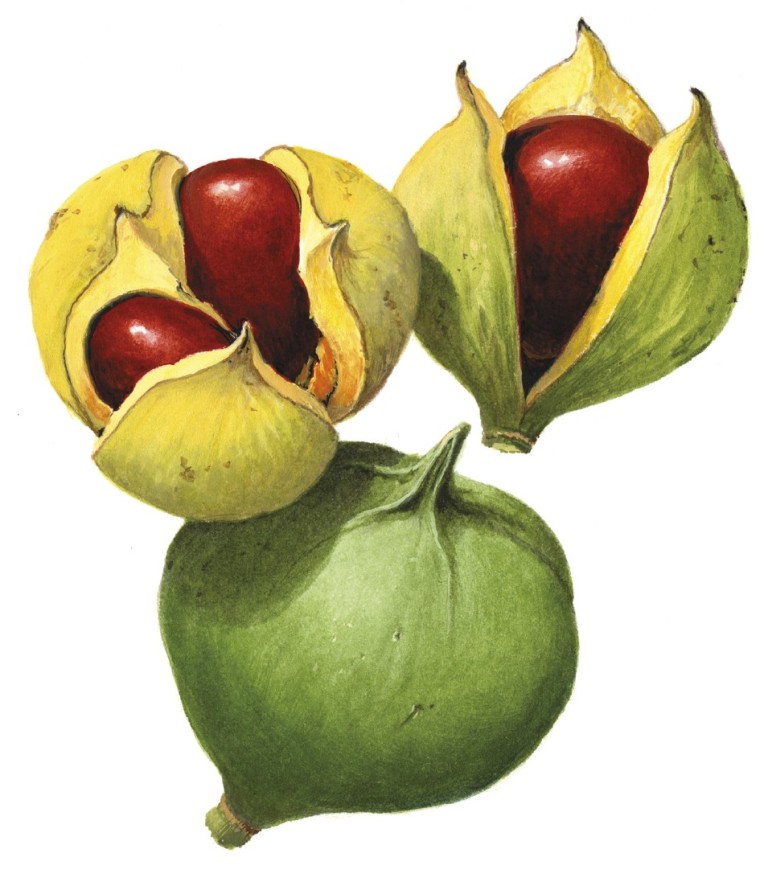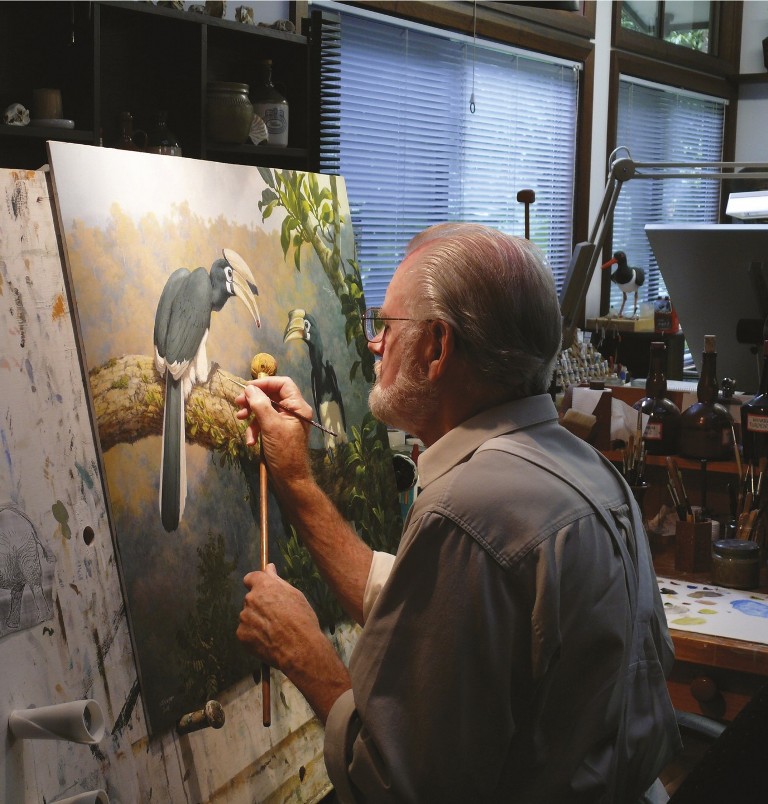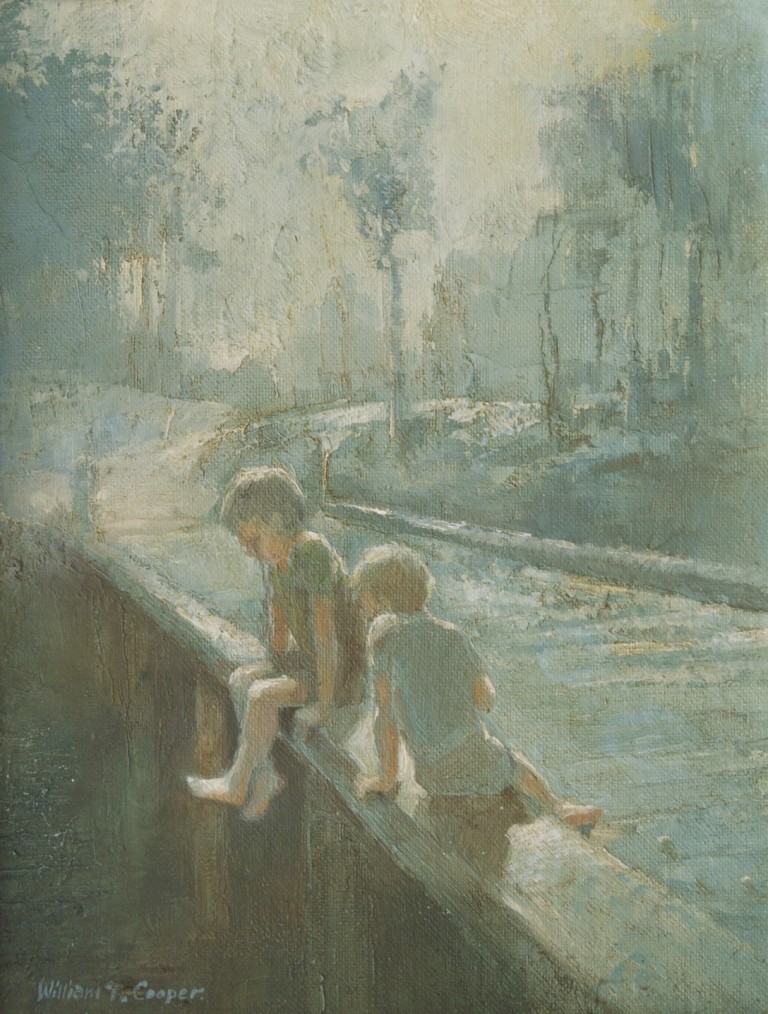March 2 - 8, 2014: Issue 152
An Eye for Nature: The Life and Art of William T. Cooper
by Penny Olsen, foreword by David Attenborough
A few weeks ago a beautiful book filled with wonderful images arrived in our office. This is the latest work by Penny Olsen, who, working side by side with a gentleman described by Sir David Attenborough as ‘the best ornithological illustrator alive’, has compiled a biography of the development of one of Australia’s premier artists – William T. Cooper.
An Eye for Nature: The Life and Art of William T. Cooper, allows readers to access the sparks that have fuelled a lifelong flame, the way an artist works and the processes that develop their skills as well as sharing pages from field notebooks that may inspire fellow lovers of all avian.
From the media release on this:
In the work of artist William T. Cooper, platypuses swim in green underwater worlds, waves throw up blankets of spray, embers glow in the aftermath of a bushfire, a Thylacine emerges from the shadows, sniffing the air. But it is his paintings of birds which set Cooper apart—his raucous cockatoos, colourful parrots, animated turacos and flamboyantly displaying birds of paradise. Often placed in meticulously studied landscapes, these intricate bird portraits reveal Cooper’s close observation not only of his subjects’ appearance, but their habits, poses and behaviour.
In this biography, Penny Olsen traces the path of Cooper’s life and art—from his childhood spent in the bush, to his teenage years as an apprentice taxidermist at Carey Bay Zoo and, later, to his work as a window dresser and landscape artist. She documents his fruitful partnership with wife and collaborator Wendy Cooper and his extensive travels in Australia and abroad in pursuit of his subjects.
Including a portfolio of bird and landscape paintings that have never before been published, the book is illustrated with photographs, paintings and sketches, as well as extracts from Cooper’s extensive field notebooks which give an insight into his interests and processes
We spoke to Dr. Olsen AM, a research scientist and natural history writer, based at the Australian National University in Canberra, and one of our nation’s foremost authorities on ornithology, about this wonderful new book.
In this latest work you have had access to one of our most celebrated living artists and ornithological illustrators and share in An Eye for Nature: The Life and Art of William T. Cooper some of his field notes and journals – what is the main difference you noticed between all the research that is entailed in presenting an insight into a subject who is no longer alive and one who is present?
An Eye for Nature was a collaboration between the Coopers and myself—that was my choice. It was certainly very different from writing about someone long gone, and scarier in a way—the responsibility weighed more heavily. Nevertheless, in some ways it was easier in that if anything was uncertain or lacking in detail or whatever, I could ask Bill and Wendy.
Coolabor not all authors allow but I chose
Through your book An Eye for Nature: The Life and Art of William T. Cooper the biography charts Mr Cooper learning self sufficiency in the bush of Newcastle during the Depression that seems to extend through his many adventures here and overseas. An Eye for Nature: The Life and Art of William T. Cooper itself is an extensive adventure – were you infected by his passion while working on this subject?
Bill’s life story and his art are a gift to a biographer. I already have a passion for nature, but I enjoyed the journey and, especially, getting to know the magnificent Coopers.
The birds displayed in this book all have an accuracy in their details that extends to placing them even in their correct environments – extending art into the realms of sharing knowledge and is an advancement in the way ornithological paintings have evolved through his works. What has remained with you as the most prominent characteristics of his works?
To me, the outstanding characteristic of Bill’s art is its accuracy in all aspects: the subject, its setting, its attitude, the light, the fine detail etc. Of course, the composition, technique and so forth are wonderful too, but he is extraordinary in his accuracy.
Mr. Cooper’s wife Wendy is a Research Associate at the Australian Tropical Herbarium, and involved in taxonomic studies of selected rainforest plants, and they now live in a rainforest – how do you think their shared passion has contributed to each other’s work?
Wendy and Bill’s special partnership benefits them both. They both love nature and going out and looking, looking until they know it all so well. Wendy helps Bill with the vegetation in his paintings (and much more). For his part, Bill has encouraged Wendy’s interest and, without any botanical training, she has become an internationally acknowledged expert on rainforest plants, Trichosanthes (vines in the cucumber family) and Garcinia (the mangosteens) in particular. Two new plant species have been named for the Coopers, one for Wendy, and Wendy has named several new species herself. Three comprehensive, lusciously illustrated, books on rainforest fruits have resulted from their partnership. The botanical collaboration, which necessitated a great many trips to various Queensland rainforest and triggered much excited discussion about their findings, began with a desire to know the plants on their rainforested block at Topaz.

Dysoxylum pumilum, in Fruits of the Australian Tropical Rainforest by Wendy Cooper and William T. Cooper (Melbourne: Nokomis Editions, 2004), page 123, An Eye for Nature: The Life and Art of William T. Cooper
An Eye for Nature: The Life and Art of William T. Cooper speaks of David Attenborough’s association with Mr Cooper and praises his work – the documentary: Portrait Painter to the Birds made due to this gentleman’s shared passion. The notion of being a ‘portrait painter to birds’ implies something with more depth than some of the wonderful photographs of birds we see nowadays – how did this context of ‘portraiture’ of ‘birds’ resonate with you?
Everyone I interviewed said how wonderful Bill was, and what a magnificent artist. A book needs a bit of tension, and I didn’t want it to sound overly fervent or even sycophantic. So, I tried to contain that in one chapter, using Attenborough’s enthusiastic words to speak for all the Cooper enthusiasts. I think portraiture is something that goes beyond accurate representation; it captures the character of the subject as well.

William T. Cooper working on a painting of Oriental Pied Hornbills (Anthracocerus albirostris), a Sumatran species, in his studio at Topaz, 2008. Photography by Wendy Cooper, page 222, of An Eye for Nature: The Life and Art of William T. Cooper
There is also in this beautiful book a portfolio of Bird Portraits and Landscape paintings that have never before been published, ‘Watching the Fish’ draws you into Australian light and communicates some of the ease of Australian life, while the birds as ‘portraits’ extends the meaning of ornithology – how did you select what to leave in or out of these unseen before works?
A lot of the work sprinkled through the book itself has never been published before either. I spent a wonderful few days in the studio with Bill choosing sketches, paintings, photos and a representative selection of works from his books. It was very much a joint effort between Bill, Wendy and I, with Bill having the final say.
What are your favourites in the works selected for An Eye for Nature: The Life and Art of William T. Cooper and why?
I have to say the cover because I’m now its proud owner! I love its drama—the energy of the dazzling birds and approaching storm— and the light. There are many others I could choose though.
________________________________________________
An Eye for Nature: The Life and Art of William T. Cooper - Penny Olsen, foreword by David Attenborough
Released March 1st, 2014 – National Library of Australia $49.99 Hardback | 288pp
‘the best ornithological illustrator alive’ —David Attenborough
In the work of artist William T. Cooper, platypuses swim in green underwater worlds, waves throw up blankets of spray, embers glow in the aftermath of a bushfire, a Thylacine emerges from the shadows, sniffing the air. But it is his paintings of birds which set Cooper apart—his raucous cockatoos, colourful parrots, animated turacos and flamboyantly displaying birds of paradise. Often placed in meticulously studied landscapes, these intricate bird portraits reveal Cooper’s close observation not only of his subjects’ appearance, but their habits, poses and behaviour.
In this biography, Penny Olsen traces the path of Cooper’s life and art—from his childhood spent in the bush, to his teenage years as an apprentice taxidermist at Carey Bay Zoo and, later, to his work as a window dresser and landscape artist. She documents his fruitful partnership with wife and collaborator Wendy Cooper and his extensive travels in Australia and abroad in pursuit of his subjects.
Available now in all great book stores and online through CSIRO HERE
William T Cooper website: www.williamtcooper.com.au/
In 1992 the Academy of Natural Sciences Philadelphia USA, presented Cooper with their gold medal for distinction in natural history art. He is the first and only Australian recipient in its 190 year history. Then in 1994, Cooper was awarded the Order of Australia (AO) for his contribution to art and natural history.
Bill Cooper is a naturalist and has drawn for as long as he can remember. His knowledge of his subjects is evident in his paintings and he prefers to draw from life rather than needing to depend on photographs as the main source of material for his work. He lives with his wife in north Queensland where his studio is surrounded by tropical rainforest.


Watching the Fish, early 1980's, opil, 23.5x18.5cm, courtesy Sue Rabboit, page 265. of An Eye for Nature: The Life and Art of William T. Cooper.